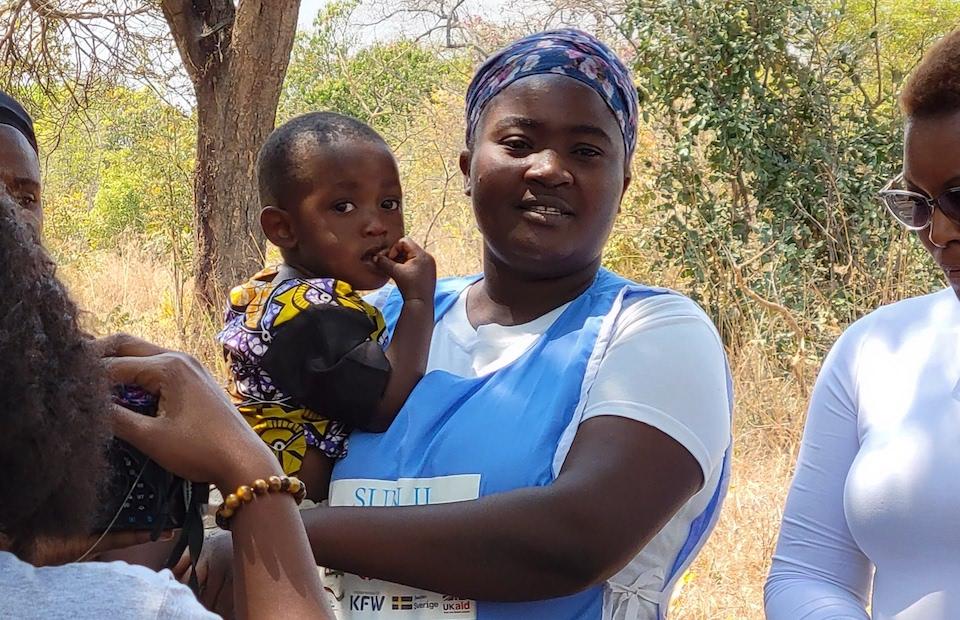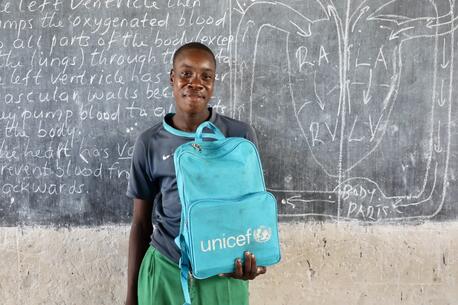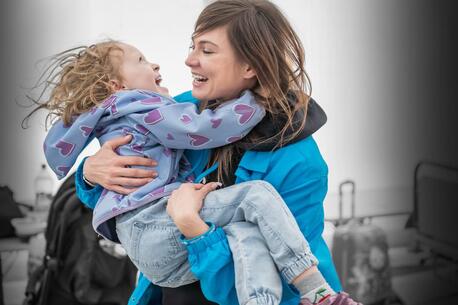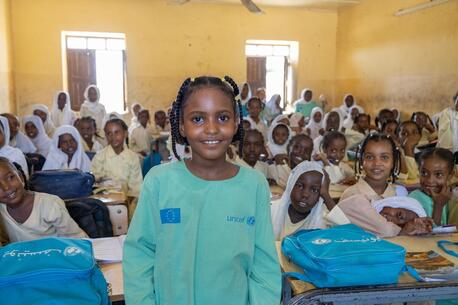
Firsthand Look: How UNICEF Supports Children in Zambia
A UNICEF USA staffer reflects on a recent visit to rural Zambia to see education, health and nutrition programs in action. "I saw how, in order to reach families with the greatest needs, UNICEF has to be adaptable and flexible."
Integrated, community-based approaches to delivering for children
"You cannot divide a child into parts," Malti Gandhi, UNICEF’s Deputy Representative in Zambia, told our group shortly after we arrived for what would be a week-long introduction to UNICEF's programs in the country.
The line would resonate with me throughout my visit to classrooms, rural health posts and nutrition centers serving children and families in some of the most vulnerable communities.

Zambia has one of the world’s youngest populations, with 48 percent aged 14 or younger. In rural areas, over 80 percent of children live in poverty, compared to 60 percent nationwide.
Children and adolescents in Zambia face diverse challenges, so UNICEF takes an integrated approach to service delivery — working in communities with local partners to provide the support and protection they need to thrive, while building local capacities to drive sustainable impact.
An education program that provides catch-up classes
In a classroom at the Bimbe School in the Chongwe district of Lusaka province, Zambia, girls and boys in blue uniforms work together in groups. When one student calls out a 3-digit number in English, the others pause to think for a moment, then move quickly to show the corresponding number from a set of place value cards. The first one to display the correct answer yells out — "Bingo!" — and the group cheers. The next student calls out a number, and a new round begins.
The activity is part of a Catch-up learning program that UNICEF supports in Lusaka and other provinces in partnership with local educators. The goal: to provide students with targeted remedial instruction and accelerate their learning, with a focus on literacy and numeracy skills.
Launched with UNICEF Core Resources, a flexible funding source, the Catch-up program has been credited with helping to boost national literacy rates among children from 37 percent to 52 percent.
Through Catch-up, teachers are trained in play-based learning methodologies and commit to an extra hour of instruction to work with students who are performing below grade level. They evaluate and group learners based on their skill levels and perform assessments throughout the year to track their progress.
From what we observed during our visit — the energetic way teacher Annie Phiri would demonstrate each mini lesson, then pivot her students to tactile activities to practice what they had learned; the students' eagerness as each endeavored to master a new skill — we could see why there is interest in expanding the program.

UNICEF is supporting teachers, administrators and municipal leaders in Zambia to institutionalize the program by integrating Catch-up classes across Zambia's national education system. The hope is to ultimately reach every child who has fallen behind, get their learning back on track and provide a pathway to success.
Partners already supporting the program's expansion include the Belgian Government, Hempel Foundation, Global Partnership for Education, LEGO Foundation and USAID. More recently, the Bill and Melinda Gates Foundation (BMGF) came on board to support the rollout in Zambia's northwest province, with classroom implementation in three of 11 districts expected to start in 2024.
Additional donor support is needed to expand the program further. By December 2024, UNICEF aims to have schools across eight of Zambia’s 10 provinces implementing Catch-up.
Saving children from severe acute malnutrition — while working to prevent malnutrition in the first place
After Bimbe, our group visited a UNICEF-supported hospital where infants and children were being treated for severe acute malnutrition (SAM) with lifesaving interventions, including Ready-to-Use-Therapeutic Food (RUTF).
We saw children who had only just been admitted, children suffering from SAM who were too weak to sit up, their mothers distraught. In a different wing, we saw children who had been there longer, who after just two or three weeks were already bouncing back, playing and smiling.
It was heartening to see the progression, the dramatic difference that explains why RUTF has often been called a miracle food.
Many miles away, under shady trees in a clearing beyond rural villages, efforts are underway to help prevent malnutrition in the first place.

From the treatment center, we traveled by van to one of the mobile health outposts that UNICEF sets up every month to bring services to those living in remote areas. Community partners and volunteers worked side by side with UNICEF to help with birth registrations, provide routine child immunizations and conduct nutrition screenings. There were demonstrations on how to cook a nutritious meal.
We spoke with a Zambian mother turned trained community volunteer. When asked why she chose to volunteer, she declared that she was proud to apply what she had once learned from visiting the health outpost when her own children were small. She was eager to share healthy nutrition tips and skills with other mothers and families from her community, to help them create a better future for their children.
I was aware that UNICEF worked within communities to build local capacities to develop and maintain services like nutrition support, but in meeting this mother, I realized just how powerful and effective — and necessary — that approach is.
It takes a village to make lasting progress. I saw this illustrated by the people we met and through the interplay of trust and relationships that must be built across local leaders, government ministries, educators, health care workers, families and young people themselves. I saw how, in order to reach families with the greatest needs, UNICEF has to be adaptable and flexible. How working with community leaders and volunteers builds local capacities to keep these important services going.

This work is being carried out across UNICEF country offices worldwide — and is only possible with support from donors and partners. Together, we can realize the promise of a healthier, safer and brighter future for children in Zambia and around the world.
Dadjie Saintus is a deputy director of philanthropy for UNICEF USA.
HOW TO HELP
There are many ways to make a difference
War, famine, poverty, natural disasters — threats to the world's children keep coming. But UNICEF won't stop working to keep children healthy and safe.
UNICEF works in over 190 countries and territories — more places than any other children's organization. UNICEF has the world's largest humanitarian warehouse and, when disaster strikes, can get supplies almost anywhere within 72 hours. Constantly innovating, always advocating for a better world for children, UNICEF works to ensure that every child can grow up healthy, educated, protected and respected.
Would you like to help give all children the opportunity to reach their full potential? There are many ways to get involved.





